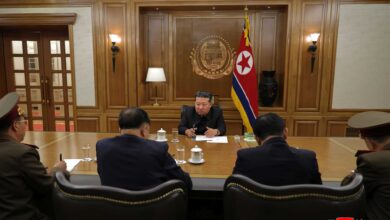In July 1947, all schools were giving graduation exams, the first of their kind since the country’s liberation. A number of officials visited Pyongyang Primary School No. 2.
The building, dating from the period of Japanese colonial rule, had a narrow entrance hall and was pretty shady, with little sunshine streaming in. A girl of about ten years old with a “Duty” armband was seated before a desk. She saluted the officials in the style of the Children’s Union as they stepped inside. As one of them acknowledged it and was slowly walking down the corridor, she called in a ringing voice, “Would you please fill in the reception form?”
“Reception?” repeated the official, turning back. “Yes, of course,” he said, coming up to the desk and taking the reception book and a pencil from the girl.
Stooping over the low desk, he filled in the form as the pupil required. Straightening up, he asked what else he had to write.
“Your name and occupation, sir,” answered the girl.
He again stooped and wrote: “Kim Il Sung, Chairman of the People’s Committee of North Korea.”
The girl’s face turned as red as a beetroot. “How foolish I am,” she said to herself, “not to recognize the General.”

